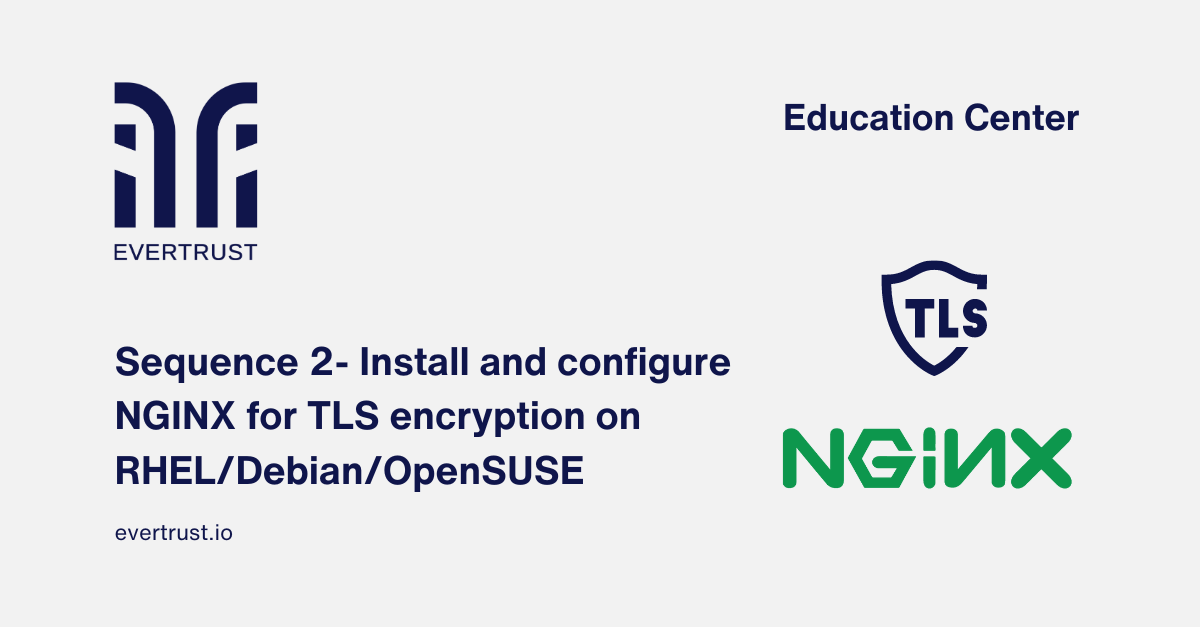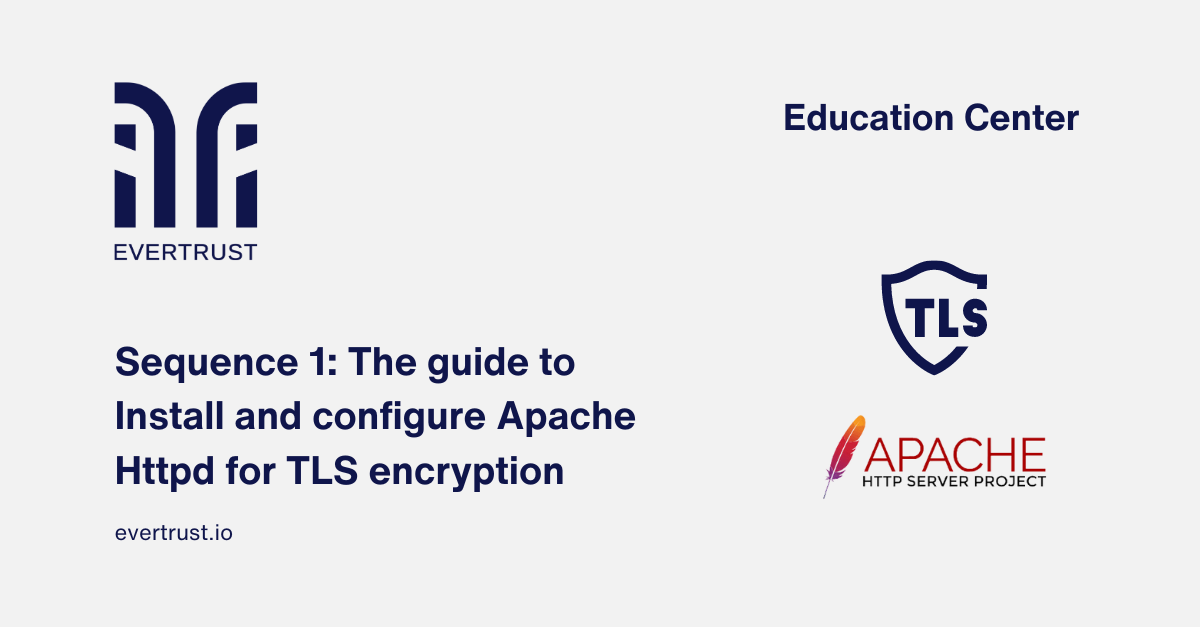Published on
May 20, 2024
In the immense world of web server administration, security stands as a paramount concern. As data transmission between clients and servers becomes increasingly vital, ensuring its protection is non-negotiable. This sequence of guides is dedicated to fortifying web servers with Transport Layer Security (TLS) encryption, a foundational skill for safeguarding sensitive information.
Sequence 1: We begin with a detailed guide on installing and configuring Apache Httpd for TLS encryption on Red Hat Enterprise Linux (RHEL), Debian, and OpenSUSE. This article provides clear and practical steps to secure your Apache web server, ensuring confidentiality and integrity in communication.
Discover more: https://evertrust.io/education/sequence-1-the-guide-to-installing-and-configuring-apache-httpd-for-tls/
Sequence 2: The second guide focuses on NGINX, a high-performance reverse proxy and web server. It covers the installation and configuration of NGINX for TLS encryption on RHEL, Debian, and OpenSUSE, offering practical steps to enhance the security of your NGINX servers.
Discover more: https://evertrust.io/education/sequence-2-installing-and-configuring-nginx-for-tls-encryption-on-rhel/
Want to implement these PKI practices?
Get expert guidance on implementing secure PKI solutions for your organization.
Get Expert Help
Sequence 3: Moving to the Windows ecosystem, the third article details configuring TLS on Internet Information Services (IIS) for Windows Server 2022. This guide provides best practices and practical steps to implement TLS encryption, bolstering your web infrastructure's security.
Discover more: https://evertrust.io/education/sequence-3-install-and-configure-iis-for-tls-encryption-on-windows-server/
Sequence 4: The final guide addresses Apache Tomcat on UNIX systems. It offers step-by-step instructions for enabling TLS, ensuring a secure communication channel and fortifying your server against cyber threats. This comprehensive sequence equips you with the essential skills to secure various web servers across different operating systems.
Discover more: https://evertrust.io/education/sequence-4-configure-tomcat-for-tls-on-unix-systems/
Today, mastering the implementation of Transport Layer Security (TLS) encryption on various web servers and operating systems is an indispensable skill for any web administrator or developer. Following these guidelines ensures the confidentiality and integrity of data transmitted between clients and servers, protecting sensitive information from eavesdropping and tampering. This robust approach to web server security not only improves the resilience of your infrastructure against cyber threats, but also establishes an environment of trust for users and customers, as today's digital landscape evolves, maintaining high security standards through TLS encryption remains a critical and non-negotiable practice.





